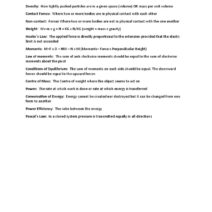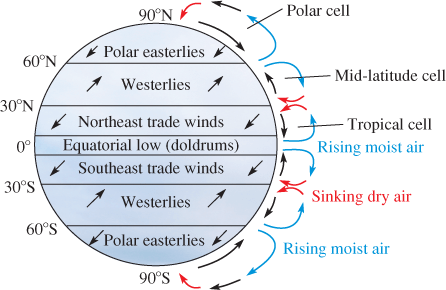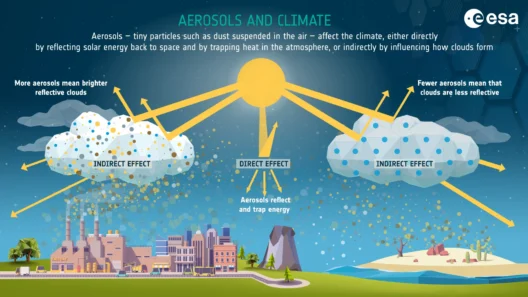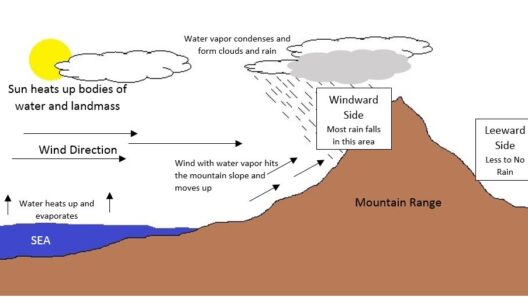Global climate change, a pressing issue of our time, influences various aspects of our Earth’s systems, one of which is wind patterns. Wind patterns, a fundamental component of the climate, are shaped by several interconnected factors, including temperature differences, atmospheric pressure changes, and the Earth’s rotation. As climate change continues to disrupt these established dynamics, understanding its impact on wind patterns becomes critical for anticipating future climatic scenarios and addressing wider environmental concerns.
To appreciate the nuance of how climate change affects wind patterns, it is essential to first analyze the existing wind systems. Wind is generated by the uneven heating of the Earth’s surface by the sun. This heating leads to variances in atmospheric pressure, prompting air to move from high-pressure areas to low-pressure zones. Generally, global wind patterns are categorized into several major systems: trade winds, westerlies, and polar easterlies, each playing a significant role in global climate regulation.
Recent research indicates that global warming is altering these wind patterns in several profound ways. One of the most significant changes is the observed intensification of the trade winds. As ocean temperatures rise due to increased greenhouse gas emissions, the temperature gradient between the equator and higher latitudes becomes more pronounced. This intensified gradient drives winds that are both faster and more persistent. Such changes can have overarching effects on weather systems, influencing everything from tropical storm formation to precipitation patterns.
Moreover, the variability of the westerly winds, prevalent in mid-latitude regions, is also being affected by climate change. These winds are integral to the movement of weather systems across the globe. Alterations in their strength and position can lead to shifts in storm tracks, which can enhance or mitigate rainfall in various regions. For example, some areas might experience increased precipitation due to a southward shift of westerly winds, while others suffer from drought as these winds move northward.
Another dimension to consider is the stratospheric winds. The polar vortex, a seasonal phenomenon characterized by the circulation of strong winds in the stratosphere, is becoming increasingly unstable. As Arctic temperatures rise faster than those in lower latitudes, the temperature gradient that maintains the polar vortex weakens. Consequently, this can lead to a more erratic polar vortex, manifesting in unpredictable cold snaps or warm spells across northern regions, such as the United States and parts of Europe. This disruption can wreak havoc on local climates and ecosystems.
The implications of altered wind patterns extend beyond immediate weather changes; they can also have profound consequences on global climate phenomena, such as El Niño and La Niña. These oceanic and atmospheric interactions significantly influence global weather patterns, agricultural productivity, and even economic stability. Changes in wind patterns may modulate the intensity and frequency of these events, leading to unforeseen climate impacts across the globe.
As wind patterns continue to evolve, so too does their interaction with other atmospheric phenomena. For instance, the jet streams, fast flowing air currents in the atmosphere that aid in the movement of weather systems, are also subject to the shifting dynamics of climate change. The warming atmosphere can lead to a more meandering jet stream—causing prolonged spells of unusual weather, including extreme temperatures, flooding, and droughts. The unpredictability introduced by these changes poses significant challenges for climate resilience efforts.
The impact of climate-induced alterations in wind patterns can be observed in various sectors, most notably agriculture. Changes in precipitation patterns arising from modified winds can affect crop yields, leading to food insecurity in vulnerable regions. Farmers rely on predictable weather systems for planning, and any disruption can seriously impact agricultural outputs. Additionally, the interaction between winds and local climates may also lead to the spread of pests and diseases, further complicating agricultural practices.
Furthermore, on a global scale, altering wind patterns plays a significant role in the distribution of pollutants. The transport of aerosols, greenhouse gases, and other pollutants relies heavily on prevailing wind directions. As these patterns shift, regions once thought to be safe from pollution may find themselves facing new challenges in air quality and health risks. Sensitive ecosystems, already under threat from climate change, may face compounded stress due to increased exposure to airborne contaminants.
Moreover, the implications of these changes extend to renewable energy resources. Wind energy has emerged as a critical component in the transition to sustainable energy systems. As climate change alters existing wind patterns, areas once optimal for wind energy generation may experience diminished wind resources, while others may become new hotspots for harvesting wind energy. This variation necessitates adaptability and careful planning in energy production to meet future demands.
In conclusion, the effects of global climate change on wind patterns constitute a multifaceted issue with far-reaching implications. From altering weather systems to influencing agriculture and renewable energy, the ramifications are diverse and complex. Understanding these changes not only helps predict future climate scenarios but also highlights the urgent need for comprehensive strategies to mitigate climate change’s impacts. As the challenge looms large, fostering awareness and adaptation is crucial in navigating the shifting winds of our planet.






